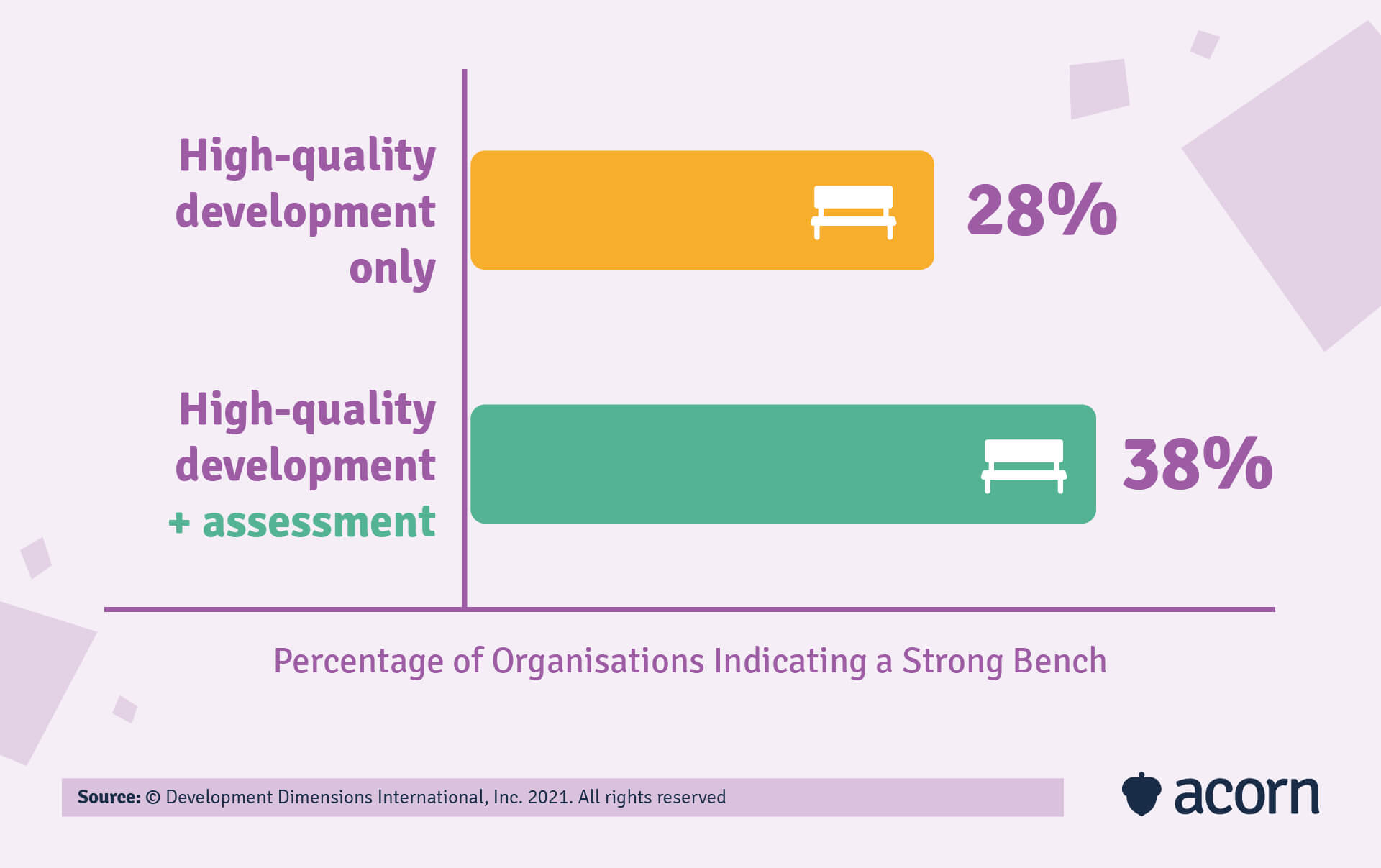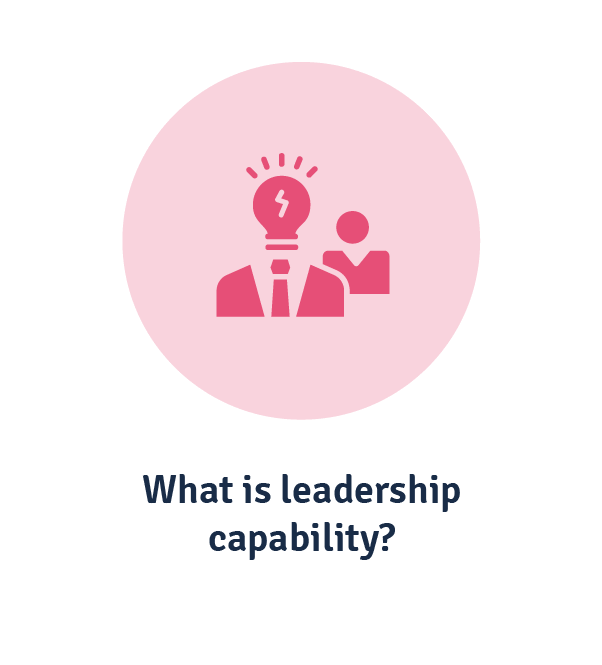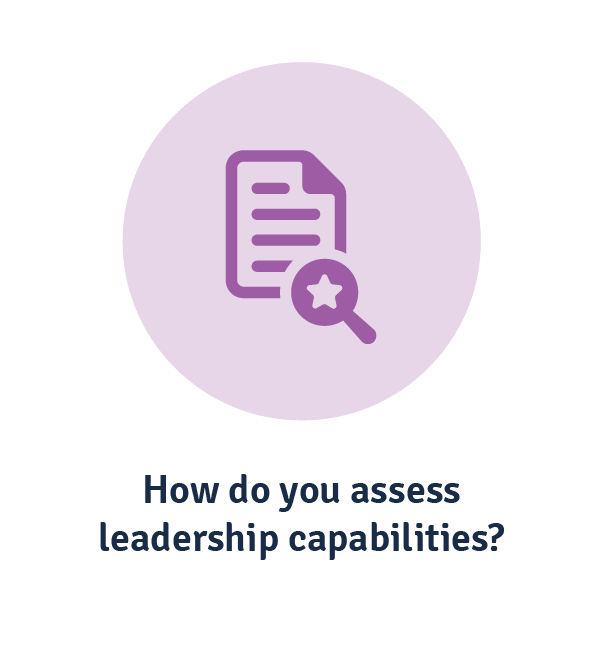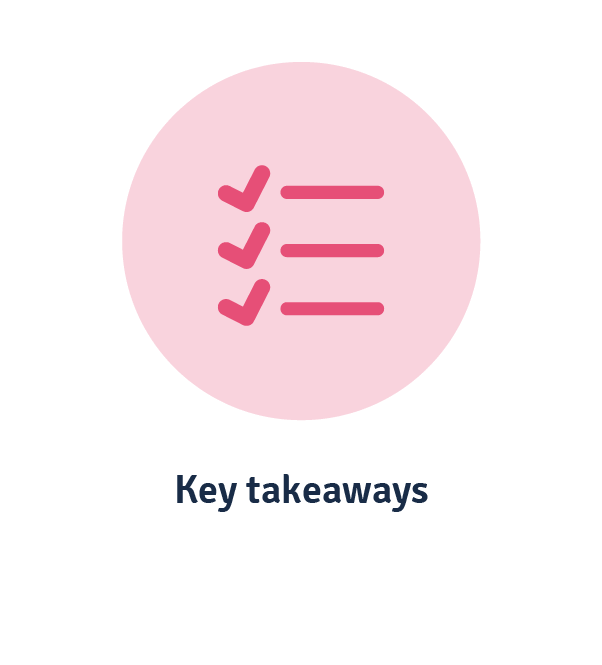A once-great individual contributor isn’t quite meeting their KPIs in a newfound leadership position. Your leadership team haven’t moved the needle on projects of importance. Whatever the reason, there are infinite use cases for a leadership capability assessment.
Capabilities are a stable reflection of your business needs now and into the future. In assessing leadership capability, you’re not only finding the current strengths and weaknesses of leaders, but proactively identifying gaps that could be problematic in future.
Read on to learn how and when to utilise a leadership capability assessment to your organisation’s advantage.
What is leadership capability?
A leadership capability is a collection of skills, knowledge, behaviours and processes that is necessary for a leader and its organisation to perform successfully. It acts as a blueprint for effective performance in strategic and people leadership roles.
What is a leadership capability assessment?
Amongst all the leadership assessment tools your organisation can use, a capability assessment is probably one of the more astute ways to evaluate current and future leaders.
That’s because, rather than just looking at leadership skills, a leadership capability assessment looks at the competency level at which those skills are performed in tandem with business-critical knowledge, processes, mindsets and expertise. That kind of data gives you:
- The strength of an employee’s performance against the organisation’s standard
- The leadership capabilities currently available within the organisation
- Maturity of those available capabilities
- Insight into the relevance and timeliness of leadership development programs.
Why it’s important to assess leadership capability
Capabilities are the centre of your business universe for many reasons, least of all because they offer a stable, replicable and sustainable blueprint for organisational performance.
When it comes to leadership capability, the stakes raise a little higher. Having their finger on the pulse of strategy realisation and execution through the workforce means on two critical fronts, leaders hold the keys to organisational success in their hands—yet most aren’t even hitting the mark.
Harvard Business Review research found 67% of strategies fail from poor execution while 61% of executives felt unprepared to face the strategic challenges of leadership positions. Just 10% of CEOs believe leadership development initiatives actually have a business impact.
The former likely means that they weren’t prepared to enter the role, based on existing capabilities and whatever preparation your organisation needs to provide. The latter is a big red flag. Namely, that while you may offer development opportunities, they aren’t hitting home because you don’t definitively understand the problem you need to solve—if you’re aware there is one at all.
If you depend solely on subjective diagnostics, the symptoms may not show the root cause because one person’s idea of emotional intelligence may not reflect the standard your organisation sets.

And a lack of definitive and quantitative leadership capability assessment means a lack of:
- Self awareness in leaders, who don’t have access to their own performance data.
- Impactful behavioural change in the day-to-day.
- Up to date talent inventories for workforce planners.
- Insight into urgent, emerging and future gaps in leadership performance to be developed by L&D.
- Evidence for L&D and HR resourcing, since you don’t know what investments to prioritise or will net the largest return.
This is part of the reason we designed the performance learning management system (PLMS), the only solution out there based on capabilities. It enables you to guide learners step by step to master the capabilities needed to accelerate leadership and organisational performance, giving you real-time insight into behavioural improvements or areas that need development.
How do you assess leadership capabilities?
The idea of a leadership capability assessment is to ask and answer a few core questions.
- What leadership capabilities do you have?
- What leadership capabilities do you need?
- Can you develop those capabilities or do you need to look externally for them?
At a high level, this is information that will enable you to optimally use HR and L&D resources. This is the way to gather it.
Benchmark capabilities
The starting point of any capability assessment is, unsurprisingly, capabilities.
If you already have a leadership capability model or framework, you’re in a good position to start your assessment. If not, now is when you benchmark the capabilities leaders need to have in your organisation.
More so than any other organisational capabilities, your leadership stream should directly reflect business outcomes. One way to approach this is to derive key skills, knowledge and behaviours from leadership challenges, as challenges give you a good baseline for effective performance.
- To address cultural demands: Influence, collaboration and inspirational leadership
- To address economic factors: Strategic direction, shareholder value and commercial acumen
- To address personal leadership styles: Build talent, lead market innovation and competitive edge.
Understand leadership needs
This means don’t just base assessments on open roles. That assumes career progression is always linear. Consider lateral moves, internal talent mobility and emerging roles when designing assessments.
Then there’s the change of focus as leadership responsibilities increase. The people management abilities of a front-line manager will be less complex than the strategic acumen a senior executive needs to address business priorities.

Framing assessments around a set of leadership scenarios will enable you to better map leadership capabilities to roles or pathways, ultimately granting you more relevant data from capability assessments.
Utilise tools and resources
Capabilities, as we like to say, don’t exist in a vacuum. They have many supporting resources, models and tools enable you to optimally utilise them for different processes. Enter: The discovery tool.
It works like this.
- You provide a website or platform with your complete suite of leadership capabilities.
- Employees or managers answer questions or respond to performance descriptors on a scale of your choosing.
- A report is generated for employee or manager and organisation that details the competency level of the individual’s leadership qualities.
Capability assessments of this kind have two distinct benefits when assessing leadership potential or performance. Firstly, it drives better self-awareness in leaders with a clear report of their performance to your standards. Secondly, it provides clear visual data of up-to-date performance outcomes.
Another avenue here is to look to reporting analytics in your choice learning platform, preferably one that can map content to your capabilities. On top of the two mentioned above, this has the added benefit of a direct line to training and development. That means you can see key data such as progression and engagement rates on top of live competency levels, allowing you to better tailor personal development plans to emerging or current leaders. (And process improvements always look good when it comes to showing ROI down the line.)
Using capability assessments in leadership development
Leadership development is likely an ever-moving pipeline in your organisation, to match the natural movements of your leadership bench.
That’s all the more reason to use capability assessments at different stages of the leadership lifecycle, if only to ensure quality of talent and that said pipeline is moving at the pace you need.
Recruitment
This can be either external or internal. In either circumstance, capability assessments offer an objective and standardised framework for hiring. And that:
- Minimises bias in decision-making
- Ensures candidates possess at least a foundation of your organisational capabilities
- Can help decrease recruitment costs.
While you’ll definitely want to assess job or team-specific capability streams, this is a good way to also understand culture fit. Adding capabilities to the standard personality assessment enables you to look at behaviours, attributes and mindsets that keep things moving in your organisation.
Self-assessments in your capability discovery tool and short cognitive tests through an onboarding portal can help hiring managers quantitively assess incoming leaders. You can also divine behavioural interview questions from your capability frameworks.
Identifying emerging leaders
Identifying those rare high potential employees for future leadership is a big task. It’s also one that really doesn’t lend itself to subjective identification, even though emerging leaders are often anointed by their peers. That’s because translating popularity amongst team players to potential leadership isn’t an exact science.
But a leadership capability framework is, and therefore, so is the assessment based on it. You’ll still need managers to spearhead assessment, but resources and tools will give them a solid measure of high potential performance.
Succession planning
Succession management relies on a number of core tenets.
- An endgame and incentive for performance management and development, both for HR and employees.
- Clear measures of competency for KPIs.
- Avoiding sudden vacancies in critical roles.
- Mitigating the storm of unstable labour markets.
And, luckily, all of these tenets can be supported by (you guessed it) assessing leadership capability.
Say your succession plans show that a key role will be vacant in a year. Capability assessments allow you to visually gather data on the maturity of leadership behaviours, skills and knowledge that candidates possess. Development pathways can be accurately designed for chosen successors using this information, potentially lessening time to proficiency (which can be up to 18 months for leaders), and data on other candidates centralised for future talent mobility.
Key takeaways
If capabilities are the backbone and leaders the lifeline of your organisation, then a leadership capability assessment is the through line that ensures stability in your most fragile and vital level.
Leadership capability assessments need only be consistent and centralised in order to glean the most useful data for:
- Improving leadership performance and time to proficiency post-training
- Prioritising and making the business case for L&D and HR investments
- Showing strategic impact from leadership development
- Visualising the strength and availability of organisational capabilities.
Related Reads on This Topic

Formative Assessments in the Workplace: Business Benefits & Examples for Employee Development
Formative assessments are usually associated with students, but workplace learning provides the ideal platform to conduct assessments on your workforce…

How to Get Senior Leadership Team Development Right (And Why Most Organisations Get It Wrong)
Leadership team development can play a major role in ensuring efficiency and resilience within your company, given the right framework…

How to Use a Capability Discovery Tool for Organisational Capability Building
A capability discovery tool provides greater insight into workforce development needs. Read on to learn how to optimally use a discovery tool…





